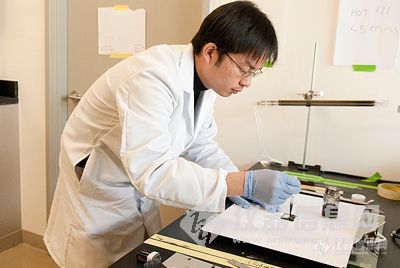


medodo
第6楼2010/02/16
check out this
英国发明储电塑料10年内可取代电池中国质量新闻网 2010-02-11 07:18:05 据新华社电 英国科学家研制出一种能够充放电的塑料。研究者称,这种新型塑料有望取代眼下手机、随身听、汽车等使用的电池。
英国《每日邮报》网络版近日报道,伦敦帝国理工学院研究人员制作的新型储电塑料样品约32平方厘米大,厚度与一块饼干相近,充电5秒后能为一个发光二极管供电20分钟。
这种储电塑料工作原理与传统电池类似,由3层纤维材料组成。上下两层碳纤维覆盖导电树脂,分别充当正负极;中间夹层为玻璃纤维。
但研究小组成员埃米尔·格林哈尔格称,这种储电塑料并不是真正的电池,而更类似一个超级电容器。它比传统电池更轻薄、充放电速度更快,使用时也不会发生化学反应,因此寿命更长。
研究人员眼下正与瑞典沃尔沃汽车公司合作,研究将这种材料应用于该公司的油电混合动力车,以减轻汽车重量并提升工作效率。但格林哈尔格说,这一研究成果的应用范围可以扩大至手机、随身听等小型设备。
按他的说法,假如这种储电塑料得到广泛应用,人们可能将拥有“信用卡大小”的手机,甚至可能出现带发热保暖功能的衣服。他预计,这种新型储电塑料“可能在10年内取代电池”。《中国质量报》